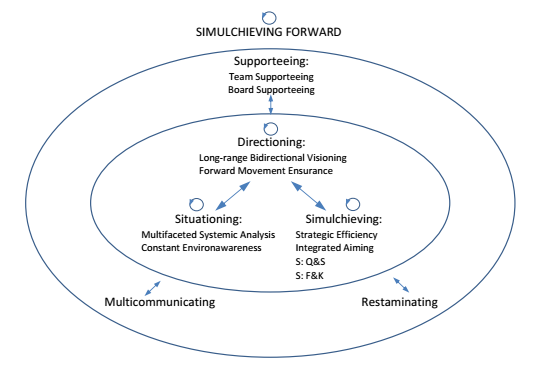Universities play an important role in social transformation and economic growth. How do those at the helm of the top universities and colleges lead their organizations?
A grounded theory study of sixteen presidents of higher education institutions in the national capital region that have been granted autonomous status by the Commission on Higher Education (CHED) was conducted over a span of five months. The results showed that, to lead their organizations well, these top leaders follow a cyclical basic social process that we call simulchieving forward. The process involves first determining aims that not only connect with the present (current school realities and major trends in higher education) but also with the future (a compelling long-term vision for the university) as well as with the past (the essence of the vision of the founder); and then constantly moving forward on those aims, taking advantage of any synergies arising from simultaneously achieving apparently conflicting aims.

As a substantive grounded theory of presidential leadership of educational institutions, simulchieving forward, with its six activities and ten best practices, has several theoretical and practical implications, including its applicability even to distressed institutions, and its potential utility for evaluating presidential effectiveness and for preventing presidential failures.
For more information, contact the author at [email protected].

